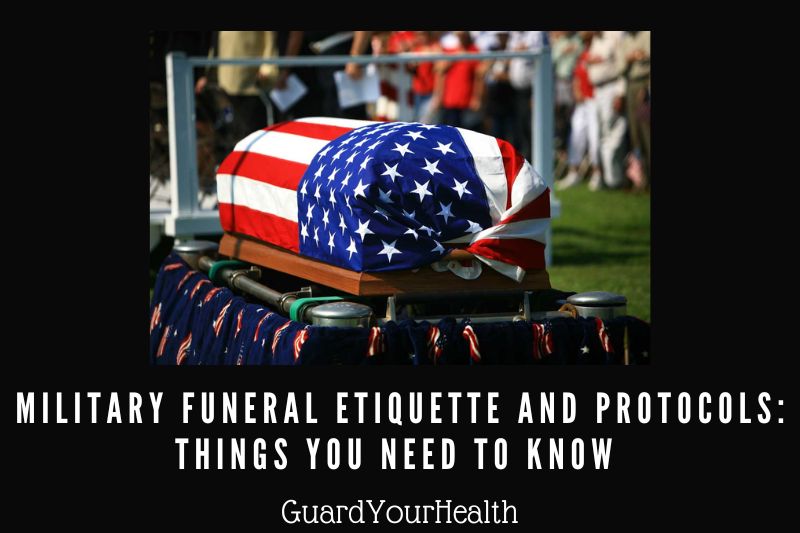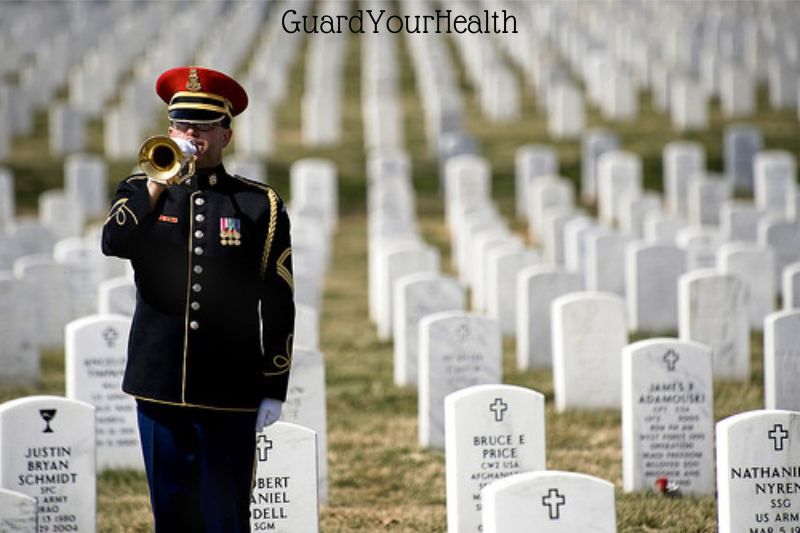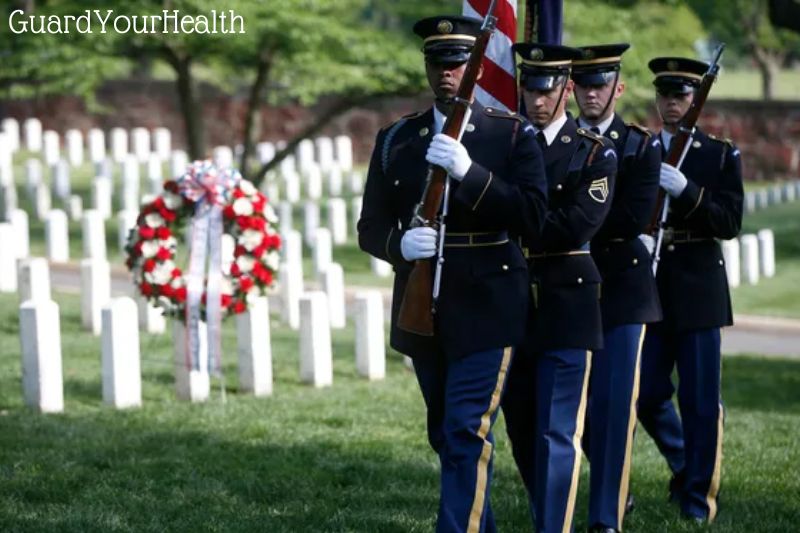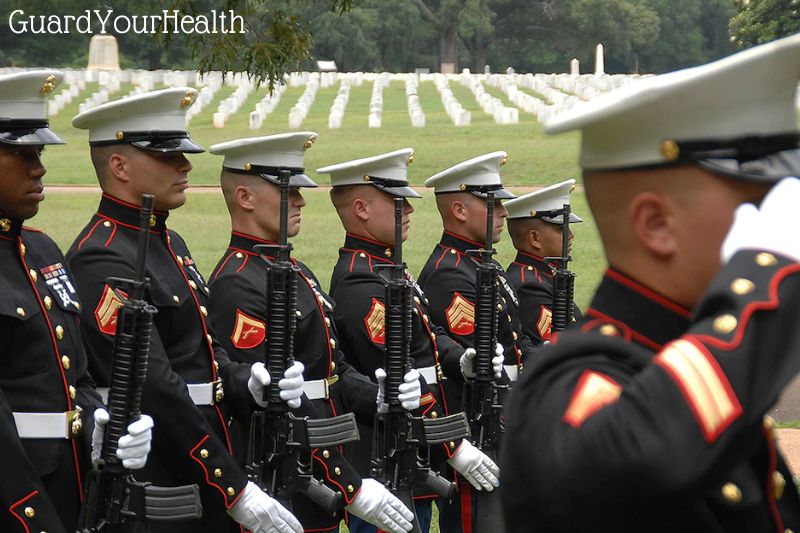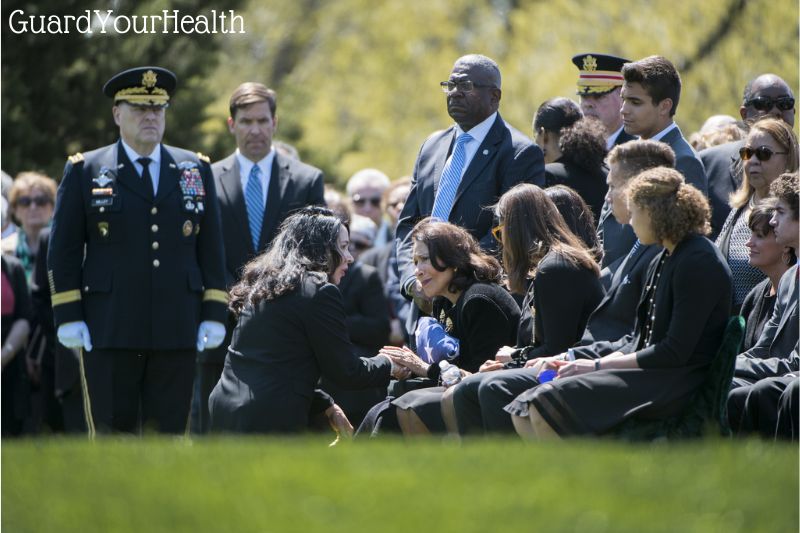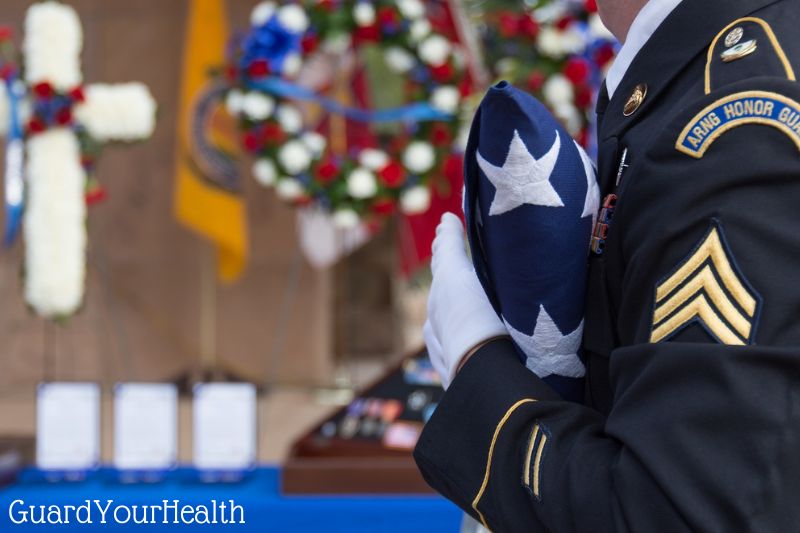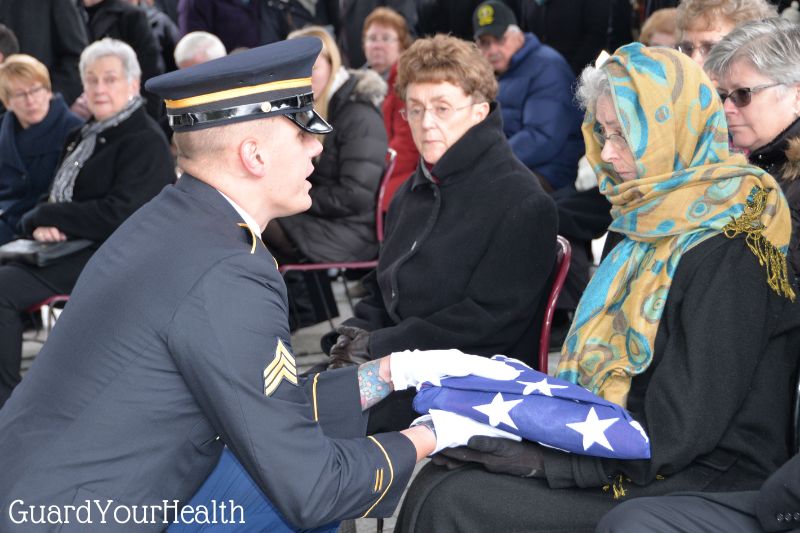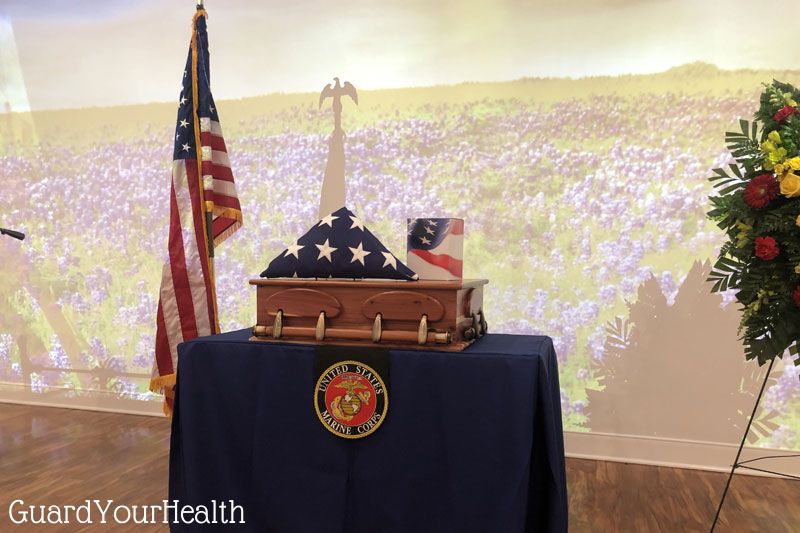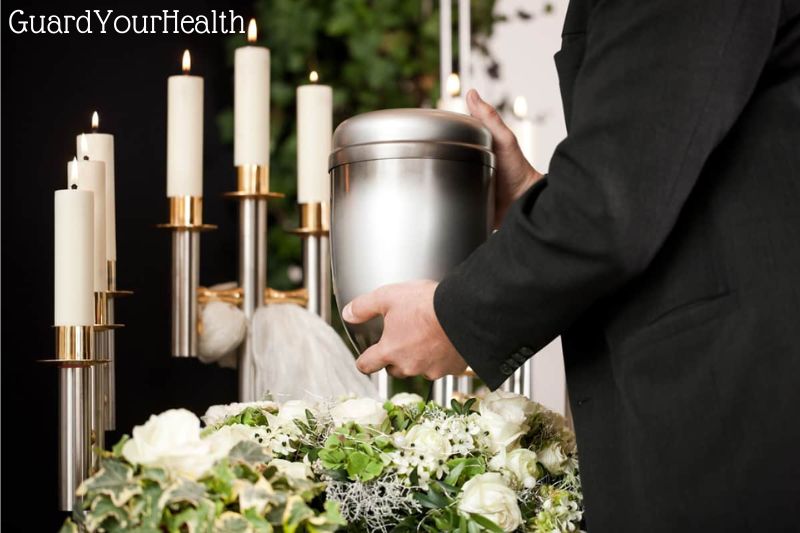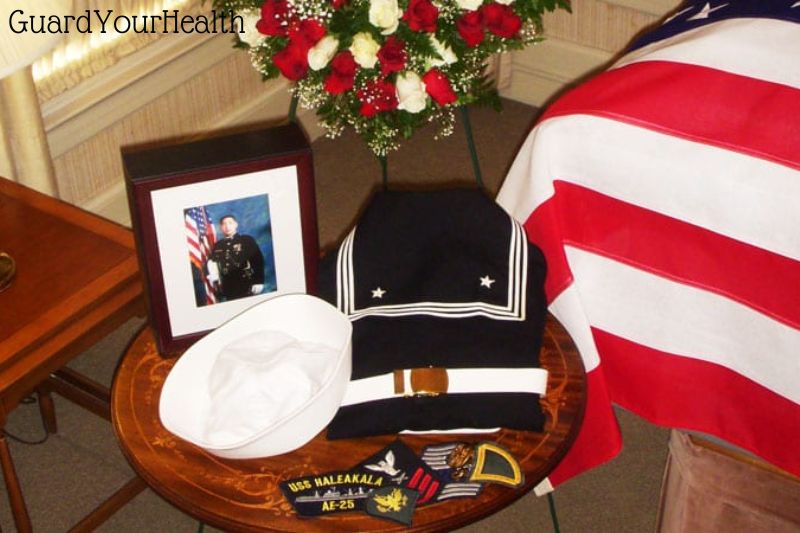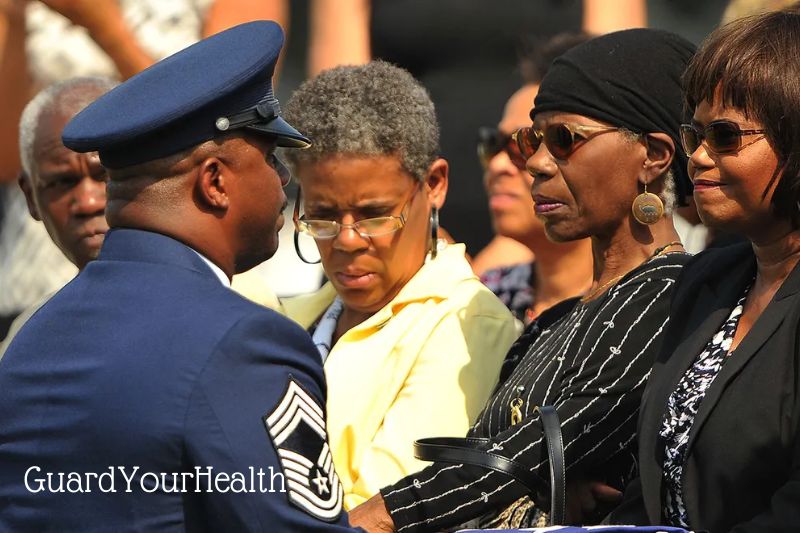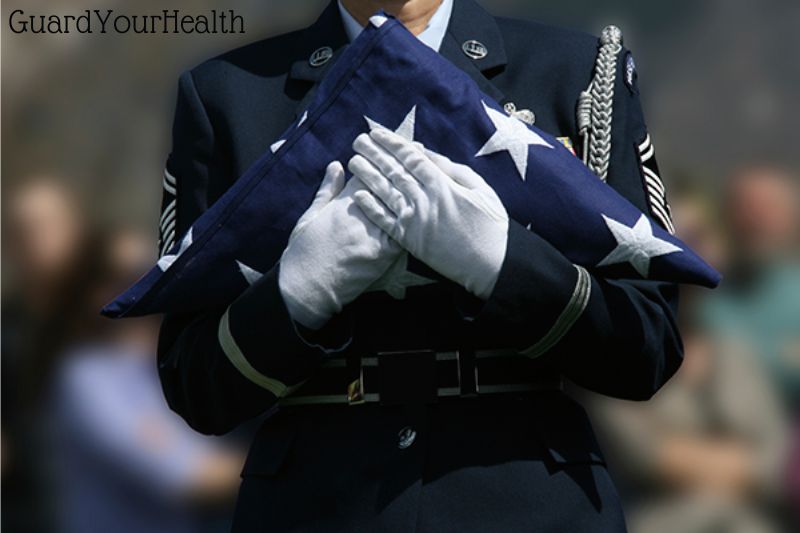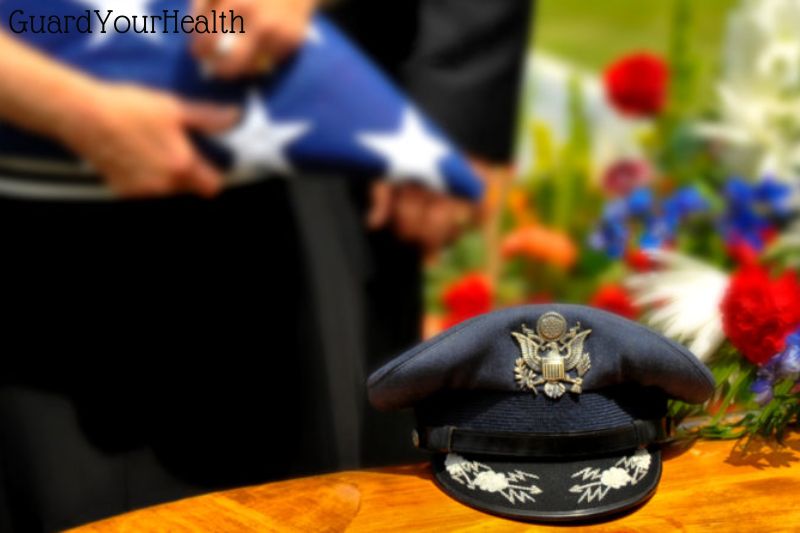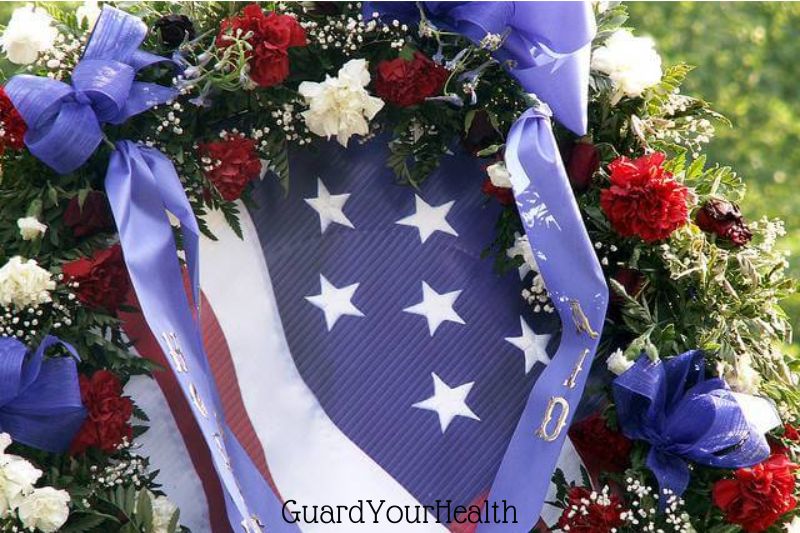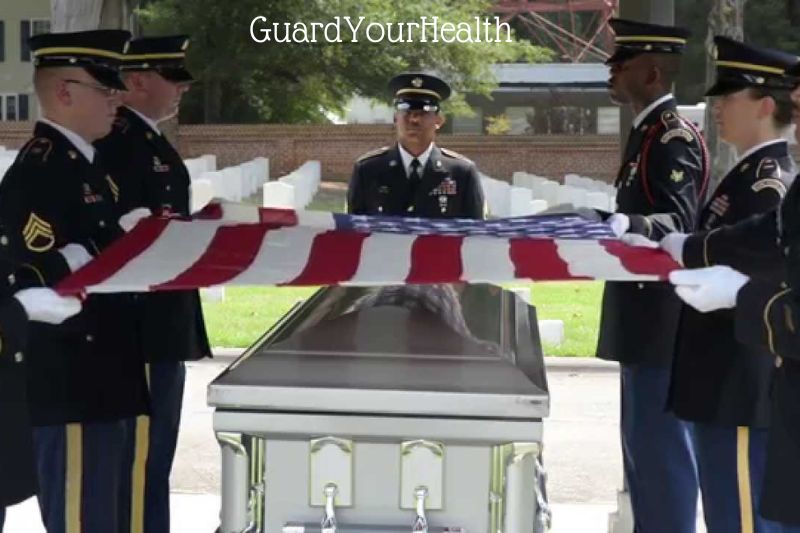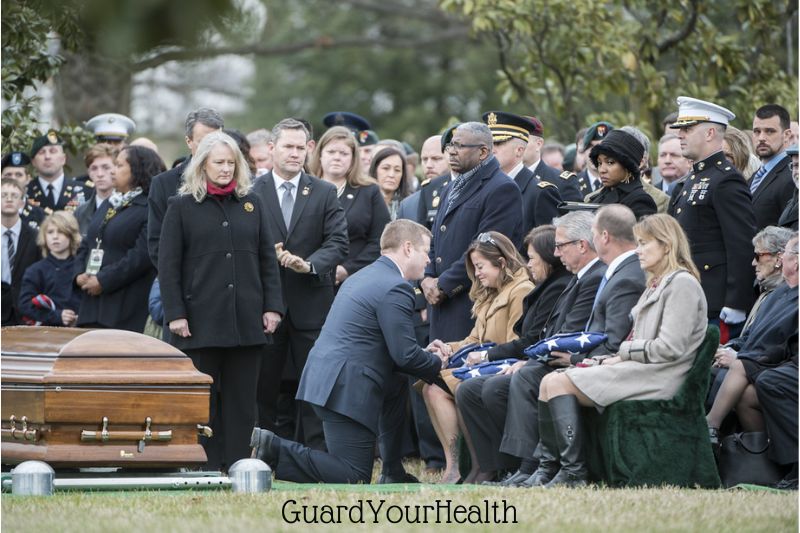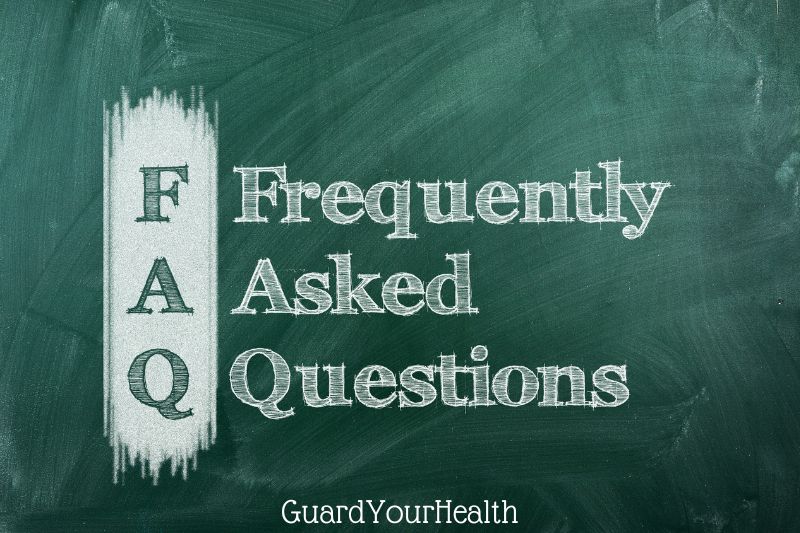A military funeral is a somber occasion that honors the life and service of a fallen soldier. Family and friends gather to mourn the loss and pay their respects, while members of the military honor their comrade with a formal ceremony. Many traditions and protocols surround a military funeral, so it is important to be familiar with the etiquette before attending one.
Keep reading for more useful information.
Planning A Military Funeral
You must first provide the funeral director a DD Form 214 in order to establish the deceased’s eligibility for a military funeral. A military member receives this form when they retire, separate, or are released from active duty in one of the many branches of the US Armed Forces.
The funeral director will examine this paperwork, confirm its validity, and then start making arrangements after that. The funeral director will next make a request for funeral honors and start the planning process with the relevant Military Service.
Please go here for further information or to request a copy of the DD Form 214. Here, we go into greater detail about what goes into preparing a military burial.
Eligibility
The following lists the several criteria for receiving military funeral honors:
Active duty military personnel or members of the Selected Reserve.
Former service personnel who left the military while still on active duty but for reasons other than dishonor.
Former service personnel who left the military under the circumstances other than dishonorable after serving at least one term of enlistment or period of initial obligation.
Former service members who were released from the Selected Reserve because of a disability they had acquired or made worse while performing their duties.
What a Military Funeral Includes
Depending on the deceased’s rank, status, and line of work, an additional set of components may be included at a military burial. However, the following honors are typically presented:
- Folding and displaying the flag
- A bugler (if available) or a top-notch recording is playing “Taps.”
Included in those extra components are the following. However, due to the high number of burials and the small number of staff, the following are frequently saved for high-ranking officers or active duty members who pass away.
- Rifle detail
- Color guard
- Pallbearers
- Caisson
- Military fly-over
Military Funeral Etiquette
Whether you are a civilian or a military member, there will be distinct etiquette guidelines and expectations if you attend a military funeral. In either scenario, a military funeral is a solemn occasion that calls for the highest decorum and respect. It is now appropriate to commemorate a hero’s sacrifices and bid them farewell with dignity.
When To Salute At A Military Funeral
If this is your first time attending a military funeral, you might think that saluting is a sign of respect. While there is no rule prohibiting civilians from saluting, doing it poorly or at the wrong time may be construed as a display of disrespect. Civilians are advised to take off their hat and place it over their hearts in place of the traditional salute. Put your right hand over your heart in its place if you are not wearing a cap.
- The caisson or funeral vehicle arrives at the grave.
- The soldiers salute one another.
- The officer in charge, non-commissioned officer in charge, and chaplain salute as the casket crew raises the coffin.
- The casket team is led to the graveyard by the chaplain.
- The coffin team secures the flag while setting the casket down.
- The flag is stretched, leveled, and centered over the coffin as determined by the OIC and NCOIC.
- The deceased’s family members are seated.
- The service is conducted by the chaplain.
- Following the conclusion of the service, the OIC and NCOIC approach the barrels.
- The family members stand up to receive honors from the representative of the graveyard.
- The rifle volley is started by the OIC/NCOIC presenting arms.
- The family settles back down while the bugler plays Taps.
- Once the flag has been folded, it is presented to the OIC and NCOIC.
- The deceased’s surviving family members receive the flag.
- Before the service ends, condolences are given.
As you’ve read, you must salute as the funeral coach or caisson pulls up and when the casket crew raises the coffin. In addition, military personnel shall render the military funeral salute when:
- The hearse is in front of them
- The casket with the flag draped over it is moved
- The formal gun salute is happening
- When Taps is played
- When the casket is lowered into the ground
Let’s move on to who should salute now that we are aware of when to do so. Even those who are not wearing uniforms in the military or in the former military may salute; however, civilians may not yell. Instead, to show respect, citizens should take off their headgear and place it over their hearts. They can still place their right hand over their hearts even if they are not wearing any headgear.
Speaking of hats, you might be curious about what to wear to a funeral for a service member. You can find some advice in the next section.
What To Wear To A Military Funeral
Respect is given the utmost importance. Everyone attending should be appropriately attired. Casual attire like T-shirts, jeans, and sweaters should be avoided by both military personnel and civilians.
- Funeral protocol for those who are dressed in uniforms
The latter group (military personnel) should wear their dress uniform or Class-A uniform. A battle dress is an inappropriate attire. Make sure your outfit is fully decorated with all the appropriate badges, medals, ribbons, and insignia.
Except when specifically instructed otherwise by your installation or commanding officer, wearing white gloves is not required. It is also optional to add a brassard, which is a straight, basic, black band that measures 2 inches by 4 inches and goes from the elbow to the shoulder on the left sleeve.
It is recommended that you obey the commanding officer’s order if you are an active personnel. On the other hand, if you are a retired service member, you may wear uniforms with the rank and insignia that you had at the time of your retirement.
While the latter (civilians) should dress appropriately for a funeral, it is recommended to wear gloomy hues. Suits are advised for males. Otherwise, pants, a dress shirt, and a tie.
Women, on the other hand, are required to wear a dress, a suit, or a skirt and blouse combo. Wear shoes that appear good and are comfy at the same time when it comes to attire. You can accessorize but stay away from loud necklaces and bracelets like bangles.
Remember to dress as though you are attending a typical church service.
Who Gets The Flag At A Military Funeral?
The next of kin, who is the person most directly linked to the deceased, receive the military flag, as was originally mentioned in the first section. The flag can be kept by the recipient and displayed in their home. It is typically framed and put on a wall. The option to give it to local veteran events is also available.
Prior to deployment, the veterans choose who will be their next of kin. The flag recipient will be the next of kin if the next of kin dies before that time, though. The succession plan for the recipient is as follows if they are not available to receive the flag:
- Spouse
- Children (by age)
- Parent or guardian (by age)
- Adopted relative with granted legal custody
- Grandparent (by age)
Note: By age means the oldest to the youngest
The flag is given to the next of kin to preserve forever. They are free to transfer it to or give it away to whomever they choose. The flag will continue to be theirs legally even after the next of kin passes away.
What To Say At A Military Funeral?
There will be certain times during a military funeral for speaking. The chaplain presenting the flag to the next of kin is the most noteworthy instance.
The chaplain will offer condolences and state, “As a representative of the US military, it is my high honor to hand you this flag.” They might also remark, “Let this flag serve as a sign of the gratitude this nation has for the service your loved one provided to our flag.”
Here are some things you might think about saying to the deceased’s family members if you want to convey your own condolences:
- Your child is an actual hero. He or she gave the uniform they wore honor, and the sacrifice they made for what they believed in will always be remembered.
- Your kid or daughter’s death was not in vain. He or she made the supreme offering. He/she is now nothing less than a hero; that is how people will always remember them.
- Your son or daughter is a true patriot who dedicated their life for their nation. No greater sacrifice can be made or act of heroism required. Our hero forever, he or she.
- Your son or daughter’s contribution to our nation is greatly appreciated by the nation. Certainly, he or she will be missed. My deepest sympathies.
Video
Military Funeral Protocol Cremation
Military funerals for cremation are just as serious, dignified, and respectful as a casket funeral, although the service may vary significantly. These military funerals may be held at the family’s preferred national cemetery or private cemetery.
Burial in a national cemetery is not a requirement for receiving military honors. No matter where you choose to have your loved one’s inurnment, they will receive the following honors.
Urn Arrives At The Cemetery.
The military funeral will start when the urn is taken to the cemetery if there was a wake for the service member. The urn will be delivered to the cemetery by either the funeral home or the deceased’s family. The urn will be placed on a podium or table by the pallbearers.
Arrival At The Committal Shelter
A private, covered, open-air pavilion that is placed apart from the cemetery is called a commitment shelter. Any family of a service member may use this for a cremation inurnment burial.
At national cemeteries or a state’s VA cemetery, cremation burials are always performed in the commitment shelter rather than a niche or grave. This allows for privacy, a full unbroken service for the deceased, and time for the family to say goodbye to their loved one.
The military-honors service will start once the urn, family, and friends have arrived at the committal shelter.
Start Of The Committal Ceremony
When holding a committal ceremony with military honors rather than a graveside service with military honors, families should be aware of one significant difference: the committal ceremony is brief.
It is assumed that a much larger funeral or memorial service was held before when organizing a committal ceremony. This is so that committal shelters can be planned for various functions during the day.
While the deceased is accorded military honors at the committal ceremony, a service scheduled beforehand allows family, friends, and sizable crowds to offer their condolences. It also enables surviving family members to pay tribute to the deceased’s life and service as well as their sacrifices.
Anywhere the family chooses, including a church, park, or backyard, can be used for these services.
A chaplain will lead the way inside the shelter when the committal service starts, followed by the honor guard.
Placement of Urn
At least two honor guard members follow the chaplain as they make their way into the committal shelter. The first servicemember will carry a folded flag while the second service member carries the urn if the family requests that the honor guard serves as pallbearers. The folded flag is set behind the urn, which is positioned in the middle of a table covered in fabric.
Family and friends assemble at the seats provided, facing the table, as the urn and flag are placed there.
Draping of The Flag
Families should be informed of this crucial distinction before the committal ceremony. The flag is not draped over the urn as it would be for a graveside casket funeral. The flag is folded until the urn is set up in the designated location in the committal shelter. The flag will then be placed resting against the urn after it has been placed.
Flowers The family may decide to include military funeral flowers in the committal service by having them placed all around the committal shelter. This needs to be planned ahead of time so that the flowers are already there when everyone gets to the cemetery for the ceremony.
You can choose to have the cemetery arrange flowers sent by family and friends for a service, wake, or memorial conducted in advance of the committal, or you can order flowers, particularly for the service, to adorn the committal shelter.
The funeral planner assigned to you must get all directions pertaining to floral decorations so they can put everything in place.
Short Service
A commitment ceremony is a brief memorial service that shouldn’t take the place of a traditional memorial service or another funeral service at the family’s preferred location.
There may be up to 20 scheduled committal services every day at a cemetery. These services offer opportunities to give close relatives and friends one more chance to say goodbye before the urn is buried or put in a columbarium niche.
You may select from the following throughout the service:
- A clergy member speak
- A poem read
- A hymn sung
- A story shared
- A eulogy for a veteran recited
The funeral coordinator will give you all the information you need if you require an exact estimate of how much time you will have for the service and honors. You can better organize the service and leave time for any distinctions conferred by asking for the time allotted.
“Taps”
The military honors will continue with the playing of Taps after the priest has spoken, the chosen poetry has been read, and any additional personalized aspects you have chosen have been completed.
A bugler will be provided if one is available; else, an electronic recording will be played. A bugler can perform “Taps” at many funerals now that there is a larger pool of volunteers. If you are informed that an electronic recording will be played, you can ask a friend, member of your family, or a known service member to offer their services to perform live during the funeral.
The honor guard salutes the departed as a mark of respect and honor when “Taps” is played.
Flag Ceremony
An honor guard member will fetch the flag during this part of the service. Then it will be opened and closed by both honor guard members while being temporarily held above the urn. After that, the flag will be refolded.
The guard member who serves in the same branch of the armed forces as the deceased receives the folded flag. The next of kin is then marched over to receive the flag.
“It is my high privilege to present you with this flag as a representative of the United States [military branch],” the service member says as he or she hands the flag to the next of kin. Let it serve as a reminder of the nation’s sincere gratitude for your loved one’s outstanding service to it and to the flag.
During the military funeral flag presentation, the flag is delivered to a designated friend of the deceased if there are no next of kin.
Rifle Volley
A firing team of seven or eight people will be available if the family requests it to fire three rifle volleys.
This custom originated during the Civil War when both sides would fire three rifle volleys at each other to let the other side know they needed time to evacuate their dead from the field of battle. They would fire three volleys once again to indicate that the battle could continue once the dead had been evacuated.
How Do Veterans’ Families Request Honors for Cremation?
Thankfully, the procedure is simple for requesting military honors for your loved one’s funeral. Even the application process itself is intended to pay tribute to the dead service member and lessen the burden on their bereaved relatives.
For interment in a national cemetery, a state veteran’s cemetery, a national cemetery, or Arlington National Cemetery:
- The family gives the funeral director DD Form 214 to obtain military rites.
- The funeral director works with the required parties to arrange for military rites.
- The government entirely covers the costs associated with military awards.
- To be interred in a private cemetery:
- The family gives the funeral director DD Form 214 to obtain military rites.
- The funeral director works with the required parties to arrange for military rites.
- The family must ask the government to cover the costs associated with the military honors.
- The VA Form 21-530 must be completed to submit a reimbursement request. Any local VA office may receive this form along with the veteran’s discharge papers, death certificate, and funeral expenses for compensation.
Also read: How to Get a Headstone for a Veteran
Other Military Funeral Procedures and Etiquette
You should be aware of a few more traditions and practices in order to avoid unintentionally coming off as disrespectful.
Military Funeral Flower Etiquette
Mourners frequently send flowers to military funerals, just like they do for other funeral events. For military services, people frequently ask for flowers with a patriotic theme, but this is not necessary. At a military funeral, flowers should never be placed on the flag or placed over it.
Additionally, placing flowers inside of an open casket is unacceptable. All floral arrangements are supposed to be standing sprays during military funerals where the American flag is draped over the coffin.
Make sure to inform the florist that the flowers are for a military funeral when placing your purchase. A skilled florist will be familiar with protocol and accepted standards for this kind of service.
Military Honors at Funerals
According to military regulations, every military funeral honors ceremony must have an honor guard of at least two members. These people will be dressed in the branch of the military’s dress uniform that the dead serviceman belonged to. They have two important responsibilities during a funeral service with military honors.
Taps will be played at the graveside ceremony by the honor guard members.
Additionally, they are in charge of folding the American flag and delivering it to the military member’s close relatives.
Where To Sit
As with any funeral service, immediate family members are only allowed in the seats closest to the front. There may only be space for the deceased’s relatives to sit at a cemetery. The person who will receive the folded American flag during the service should be front and center. You should stay seated throughout the ceremony if you are sitting at the grave site.
Bringing Children
It is not advised to bring young children unless the family of the deceased specifically requests it because a military funeral involves extended silence and stillness. Older children should be informed of the procedure in advance and encouraged to attend if they can behave respectfully throughout the ceremony.
Guidance From the Chaplain
All attendees at the service should adhere to the chaplain’s instructions at all times. When it is suitable for attendees to sit, stand, or direct their gaze toward the flag or casket, the chaplain will give instructions.
Knowing that not everyone is familiar with military traditions, military chaplains typically do a decent job of providing instructions to attend. They are dedicated to making sure that funeral ceremonies are dignified and in accordance with accepted practice and take their jobs very seriously.
Video:
No Electronic Devices
It goes without saying that all technological gadgets, including cell phones, should be put away throughout the ceremony. To be absolutely assured that none of your devices will produce noise during the service, it is a good idea to double-check them. It’s inappropriate to have a cell phone that is buzzing or ringing during a service.
FAQs
How Long Do Military Funerals Last?
Military funerals are often shorter than non-military funerals. They’re typically under an hour and often closer to thirty minutes.
Honoring Those Who Served
Our military personnel is courageous, devoted, and selfless. They defended the people they loved while serving their country in life. It is only fair that they are cremated with military honors after passing away to show them the respect, honor, and gratitude they merit.

